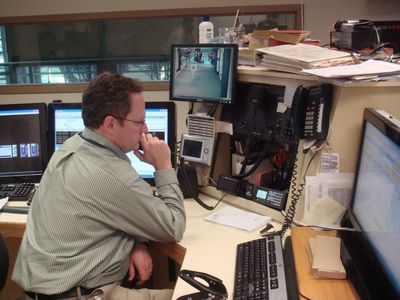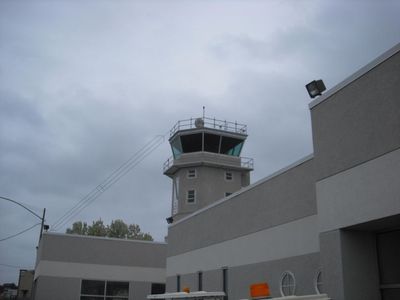Field-proven emergency communications for Arkansas Regional Airport
Wednesday, 17 October, 2012
The Arkansas Airport Operators Association (AAOA) in the USA is responsible for most of the 91 airports in Arkansas. This north-east Arkansas region is known for its seismic activity along the New Madrid fault. The airport communications have relied on the Arkansas Wireless Information Network, which is a statewide trunking system that provides excellent coverage throughout the state. It is, however, reliant on land-based infrastructure, including repeater towers and microwave links. The Assistant Airport Director, Mark Mellinger, recognised the need for a reliable airport-centric emergency communications system that was not reliant on infrastructure and would allow communications of both voice and data.
A Barrett HF radio communications solution was proposed by NVIS Communications, a Barrett-approved systems integrator. John Rosica, President of NVIS Communications, commented, “We knew the solution we proposed would provide first-class emergency communications; but it also required an FCC licence for specific HF channels and an Arkansas Department of Aeronautics grant. We assisted Mr Mellinger in submitting a strong case for the licence and grant, which were both approved.”

The communications plan was rolled out in stages. The first stage commenced at the end of 2010, with installation in 2011. Stage one incorporated four Barrett 2050 HF transceivers, two with the Barrett 2020 fax and data and email system with internally fitted Clover 2000 modems together with antennas, support equipment, installation and training. The station at the Northwest Arkansas Regional Airport also required a Barrett 2076 remote site controller to provide remote control access of the radio. The 2076 utilised the airport’s wireless LAN to provide full radio control and VoIP audio in the communications centre. At the NW Arkansas Regional Airport, the transceiver and antenna could not be located within the airport communications centre, so another site on the airport was located to house this system.
In July 2012, stage two commenced with the installation at the Hot Springs, AR Airport. A Barrett 2050 HF transceiver and 912 antenna were installed. In September 2012, a third station was installed at Fort Smith AR Airport, with a Barrett 2050 with internal Clover modem and 912 antenna. Since the installation of the Hot Springs station, Mellinger has conducted daily checks and was able to establish an ALE (automatic link establishment) throughout August 2012. Weekly voice checks were conducted between Northwest Arkansas and Hot Springs Airports with excellent results. The distance between the two stations is approximately 241 km. Rosica commented, “The NVIS capability of the 912 multiwire broadband antenna and the efficiency of the ALE in the Barrett 2050 have greatly contributed to the success of the solution.”

The AAOA’s operation plan, in the event of a disaster, is to deploy to a damaged airport and re-establish communications with the outside world. In late August 2012, this emergency plan was implemented over the three days it took for Tropical Storm Isaac to move through Arkansas. Daily damage reports were relayed via HF voice, with excellent link quality. ALE links were established on the first try almost every time. The secure calls were conducted with excellent results and the Status Request and Beacon features of the radio were used daily.
A Barrett PRC-2090 HF Manpack transceiver with vehicle docking station was also incorporated into the solution for mobile use with the Barrett 2019 mobile antenna. The PRC-2090 was fitted with an internal data modem and is highly portable with a battery pack and whip antenna.
Mellinger said, “We are planning further expansion of the Barrett solution to fully enable email capability across the network with connectivity into the telephone network, plus interoperability with other government agencies and a cross gate to allow team leaders in other areas of the airport to have access to the HF solution from their VHF/UHF networks. I am very happy with the Barrett HF solution and the expertise of John Rosica and his team at NVIS Communications.”
Customised rugged tech shaping the next era of defence comms
Rugged computing platforms are becoming central to how armed forces protect communication...
A guide to aquatic survival this summer
While most Australians are planning aquatic adventures this summer, less than a third are...
Maher Terminals enhancing operations with private wireless
Maher Terminals chose the Nokia Edge platform because it needed a secure, reliable,...



